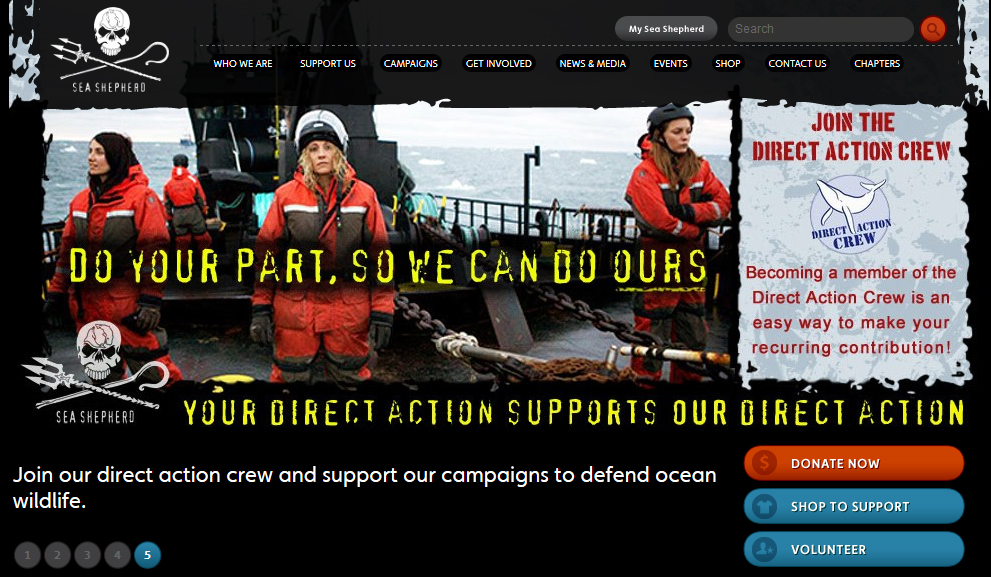
Nonprofit organizations need to communicate their work, their projects, their values, and goals to a diverse audience to bring awareness, get funding and, ultimately, promote their cause.
Are traditional communication branding strategies valid for civil society organizations? Do NGOs value the potential of a brand as a communication tool?
At present, branding strategies in the nonprofit sector had been irregularly developed. Civil society branding landscape shows that some organizations are really making efforts while others don’t.
So, what are you selling actually?
At this point, explaining that a brand is not just a communication element anymore and has become a positioning factor of many organizations is obvious. So, why are several NGOs not using their brand in such a way? Here are several reasons why:
Lack of professionals trained in institutional communications
As with any other area, the NGO field has little, medium and big multinational organizations with irregular material and human resources. Indeed, in the sector, micro-organizations are abundant. It is key for them to invest in professionalism (by volunteering programs, cooperation with other entities, and through internal training) to improve the skills of staff in charge of branding strategy.
Branding criteria divorced from reality
Several organizations still largely prefer not to use commercial marketing and branding strategies because they feel these do not represent traditional NGO ethical values. It is key to understand that tanks can’t be beaten by throwing stones and using ‘enemy’s weapons’ is mandatory.
The methods to improve branding acknowledgement should be the same as used by commercial corporations. Make no mistake. It’s not the tools, it’s the craftsman. The tools you are using should not dictate the meaning of your work.
Little or no investment in market research
The vast majority of actions from nonprofit entities are focused on the message and forget to get to know their target audience. Do you know the age, sex, or education level of your donors? Do you know what other organizations they follow? Do you know what are the values your supporters identify with?
Using the brand for awareness and funding purposes only
Not planning any long term branding strategy, not measuring results, and not seeking potential micro markets. These are errors which result from short term campaigns aimed to look for immediate results.
Branding lasts and is a key element to loyalty targeted audience. Branding strategies should be integrated into the rest of marketing and communication actions.
Using communication channels erroneously
A very common nonprofit organizations’ mistake is confusing information with communication. To clarify, as said by Sydney J. Harris:
Information is giving out; communication is getting through*
It is so frequent to see how organizations are using social media as informative channels instead of investing and treating them as valuable social forums, where they can create informed communities, where audience can be emotionally involved and influenced.
Evaluation errors
Specific key performance indicators (numbers of ‘likes’ or amount of appearances in the media) are seen frequently as communication goals in themselves and NGOs forget the real objective which is return of investment, accurate reception of the message, and engagement.
Your brand perception from the audience and the achievement of global goals from your communication strategy should be analyzed continuously to measure results.
The brand as an emotional catalyzer
Few brands from the social sector achieve communicating in such a powerful and differing manner as Sea Shepherd. Their branding strategy is simple, emotional, and consistent. How do they do it?

Sea Shepherd
- Addressing to young, educated, creditworthy, and involved audience.
- Associating the brand with an easy to communicate concept: direct action.
- Designing a powerful hero image: Captain Paul Watson.
- Building an antagonist image: whaling vessels.
- Using visual-rich channels like documentaries and TV shows.
- Selling merchandise and bringing awareness by offering visits to their ships.
- Seeking influencers known to their audience like Sean Penn or Red Hot Chili Peppers.
- Showing their achievements and goals with transparency.
The brand as a tool for identification and commitment
The Ex-Werewolf Association is the new branding selected by the Parkinson Disease Association of Alicante (Spain) to achieve emotional awareness to connect with their audience. They are helping their beneficiaries by achieving a media impact with a simple, rational, and emotional branding strategy. They keep a close and consistent contact with their audience.
They designed a branding strategy based on humor, calling the attention to their potential audience by showing the overcoming spirit of those who suffer from Parkinson disease.
They ‘howl’ to eliminate unawareness of this disease, call for new beneficiaries and, at the same time, ask for funding, and inform the general public about their work. They also:

Ex-Werewolf Association of Alicante.
- Address potential beneficiaries and their immediate family circle.
- Associate the brand with a strong safe setting concept: a pack of wolves.
- Use visual-rich channels like social media and video.
- Sell merchandising with a strong brand presence.
- Seek donors in public events and in local institutions.
So, what about you?
It does not matter if your organization is big or small, if you are addressing the needs of older people or young activists. Developing a well-planned branding strategy to help build a lasting strong presence is key to reach your audience, staff, donors, media, and general public.
What about you? How are you planning your branding strategy? Read the next part, the Good, the Bad and the Ugly, Branding Strategies in the Nonprofit Sector (II), to learn some keys to improve your branding.
References
* “The two words ‘information’ and ‘communication’ are often used interchangeably, but they signify quite different things. Information is giving out; communication is getting through.”
https://en.wikipedia.org/wiki/Sydney_J._Harris
Sea Shepherd.
http://www.seashepherd.org
Ex-Werewolf Association of Alicante Project.
http://www.gettingbetter.es/exhombreslobo


